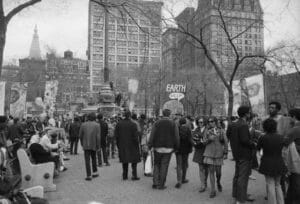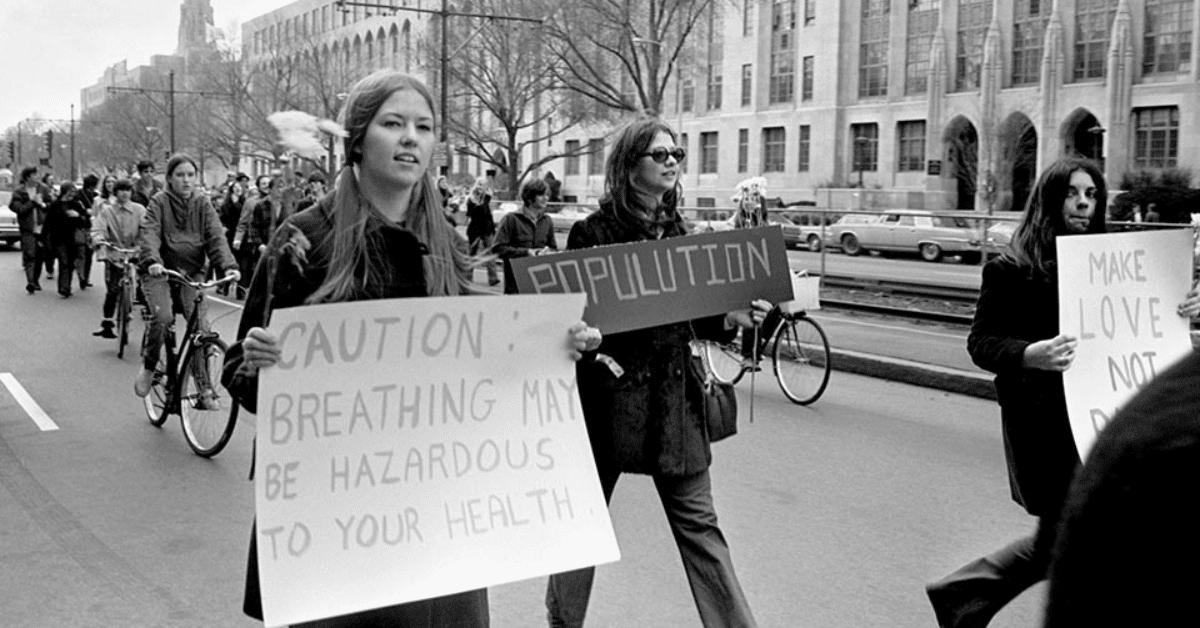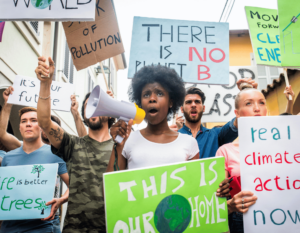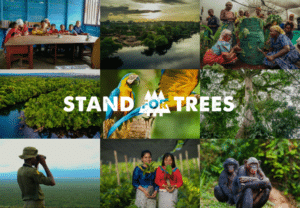Every April 22nd, people around the world come together to celebrate Earth Day—planting trees, picking up trash, joining rallies, and taking action for the planet. But behind the green campaigns and eco-conscious hashtags is a powerful origin story rooted in protest, passion, and a growing urgency to protect the environment.
To understand the history of Earth Day, we need to rewind to 1970 and to a determined senator from Wisconsin who believed the Earth deserved its own day.
The Origin of Earth Day
In the late 1960s, the U.S. was facing a wave of environmental disasters. Toxic waste was poured into rivers and lakes, smog choked cities, and the devastating Santa Barbara oil spill in 1969 (pictured below) made headlines across the nation. Yet environmental protection was barely on the political radar.

The devastating Santa Barbara oil spill captured national attention, igniting a wave of environmental reforms in the following years and inspiring the creation of a nationwide day dedicated to environmental awareness.
That changed when Senator Gaylord Nelson of Wisconsin decided to take action. Inspired by the anti-war teach-ins happening on college campuses, Nelson proposed a national day to focus on the environment.
Senator Nelson said: “The objective was to get a nationwide demonstration of concern for the environment so large that it would shake the political establishment out of its lethargy.”
He recruited a young activist named Denis Hayes to help organize it. Together, they launched what would become the first Earth Day. They chose April 22—a date that fell between spring break and final exams—to ensure maximum student participation. It worked. The origin of Earth Day lies in this smart planning and grassroots momentum.
April 22nd 1970: Earth Day is Founded
On April 22, 1970, 20 million Americans—nearly 10% of the population—poured into streets, parks, and campuses to rally for a healthier planet.
Earth Day was founded on the idea of unity across political and social lines. Students, teachers, labor unions, business leaders, Republicans and Democrats alike joined in a powerful display of collective action.

Earth Day rally at Union Square Park in NYC. Image by © Bettmann/CORBIS
It became the largest single-day protest in U.S. history at the time.[1] And it had real results. Just months later, the U.S. government formed the Environmental Protection Agency (EPA) and passed historic environmental legislation, including the Clean Air Act, Clean Water Act, and Endangered Species Act.[2]
The history of Earth Day begins here—with people demanding change, and getting it.
From Local Rallies to a Global Movement
By 1990, Earth Day had gone international. That year, more than 200 million people in 141 countries took part, bringing global attention to pressing environmental issues.[3] It helped set the stage for the 1992 UN Earth Summit in Rio.
As time went on, Earth Day evolved to address new threats, including climate change, deforestation, and plastic pollution. Today, digital tools allow organizers and individuals alike to take action across borders.
Earth Day is now the largest secular observance in the world, with more than 1 billion people in over 190 countries participating each year.[4]
Why Earth Day Still Matters
Since Earth Day was founded, the environmental movement has grown—but so have the challenges. Climate change is accelerating. Biodiversity is declining. Forests are vanishing at alarming rates.
That’s where we come in.
At Stand For Trees, we work to protect some of the world’s most important forests, because forests are one of the most effective tools we have to fight climate change. They absorb carbon, protect wildlife, support biodiversity, and empower local communities.
When you support a forest through Stand For Trees, you’re helping fund community-led conservation projects that deliver real climate impact.
The Future of Earth Day Starts With You
The history of Earth Day is a story of bold ideas, grassroots organizing, and unstoppable momentum. But it’s also a story that’s still being written.
This April 22—and every day—we can be part of that legacy. Whether it’s protecting a forest, sharing knowledge, or making a sustainable choice in our own lives, small actions add up.
Protect forests. Empower people. Because a healthier planet starts with all of us.
[→ Stand For Trees Right Now ←]
Support real climate action. Make every day Earth Day.
References
[1] https://www.history.com/articles/earth-day
[2] https://www.earthday.org/history/
[3] https://time.com/6968732/earth-day-surprising-facts/
[4] https://unfoundation.org/blog/post/history-of-earth-day/











